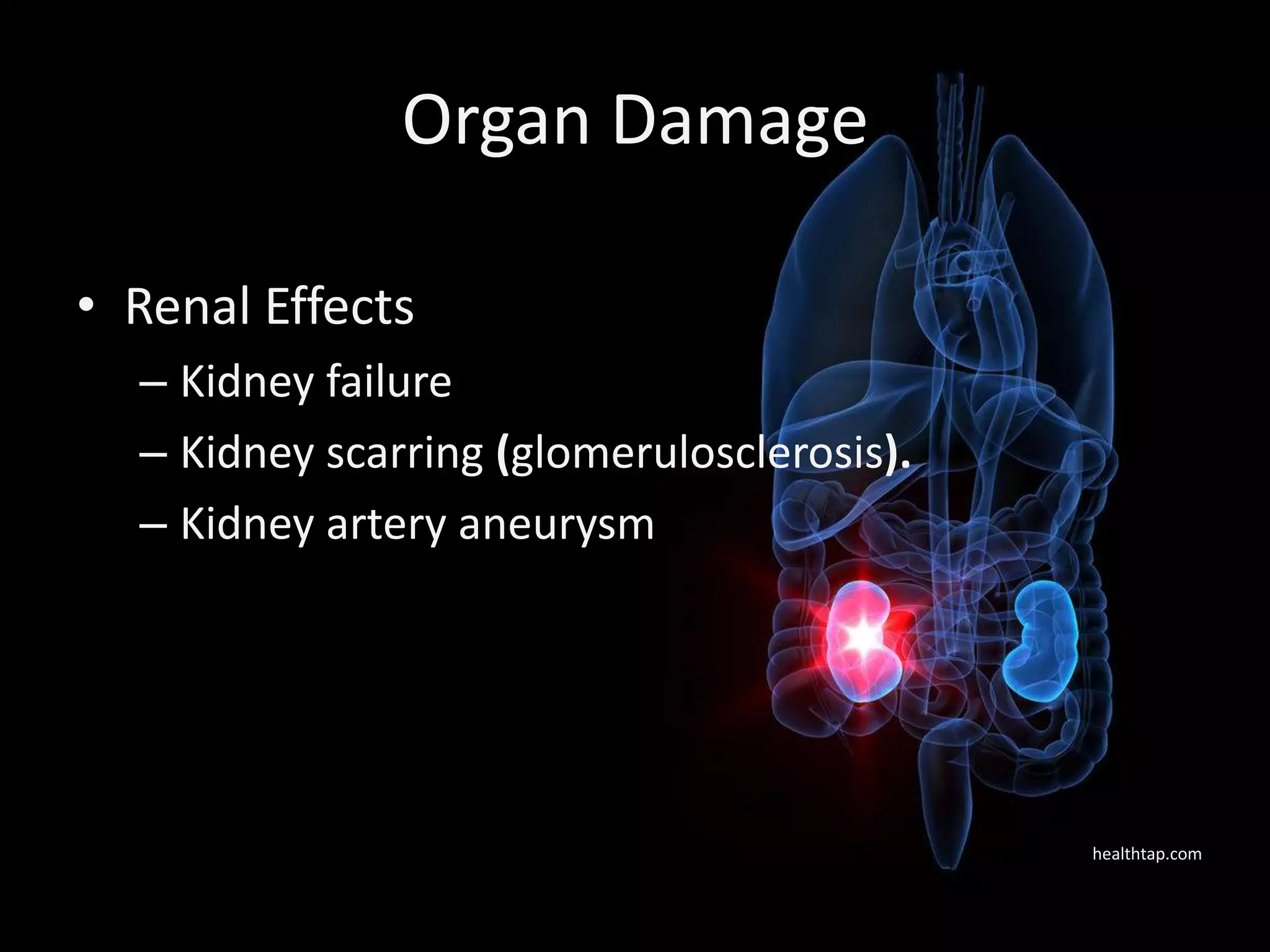This document provides information about hypertension for nursing students. It defines hypertension and prehypertension according to JNC 7 guidelines. It describes the differences between essential and secondary hypertension and lists some causes of secondary hypertension. It discusses the organ damage that can result from uncontrolled hypertension, including effects on the heart, brain, kidneys, and eyes. The document outlines treatment approaches including lifestyle changes and medications. It presents learning objectives and activities for students, including developing a nursing care plan for a hypertensive patient.






























